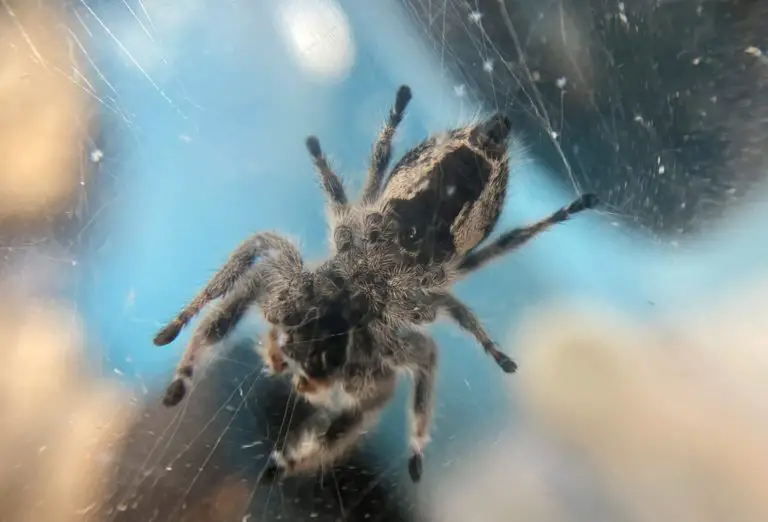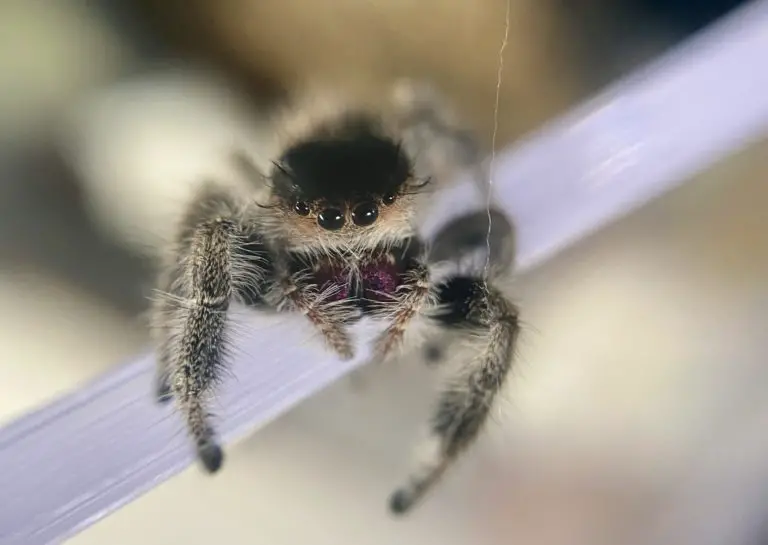Jumping Spider Gender : Learn How to Determine.
When you first get a jumping spider, depending on its age and the specific jumping spider species, it can be difficult to determine its sex. A younger spider still has a lot of growing and maturing to do, which means it might not display the tell-tale indicators of the jumping Spider gender straight away.
If you are wondering how to tell if a jumping spider is male or female, it is best to wait until the sub-adult stage or maturity; this will help you avoid making mistakes or guessing incorrectly. Jumping spiders reach maturity anywhere from four to eight months after they hatch, depending on the species. This is when you will be able to most accurately determine the sex of your spider.
Male vs Female Jumping Spider - Is there a simple way to determine the sex?
Generally, female spiders are slightly larger than males. Their coloring can also set them apart, depending on the species. For example, female Phidippus regius jumping spiders can be orange, red, brown, grey, or white depending on their locale, while males are usually black and white. This can be a less useful indicator when dealing with a bold jumping spider, however. Both female and male bold jumping spiders can be black and white, which is why male regal jumping spiders can often get mixed up with them.
Determining the Jumping Spider Gender by its Anatomy
There are specific parts of a jumping spider’s anatomy that you can check to determine if it is a male jumping spider or a female jumping spider no matter the species. The epigyne, pedipalps, chelicerae and size of the individual spider are looked at to determine the difference between male and female jumping spiders.
Epigyne
The epigyne is a reproductive organ found in female spiders. The reproductive organs of both male and female jumping spiders can be found on their abdomen. It is a small, hard, chitinous (a type of hard exoskeleton) structure located on the underside of the abdomen. Many spider owners describe the epigyne as a small, black dot.
The epigyne is used to store sperm from the male spider. During mating, the male will insert his pedipalps into the epigyne to deposit his sperm.
To check for an epigyne, you will need to view your spider from underneath and look for a small, hard structure on the underside of the abdomen. If you can see an epigyne, then your spider is female.
However, for many different species, the reproductive organs of jumping spiders – including the epigyne and pedipalps – only become visible when the spider is sub adult and nearing maturity. So, if you cannot see an epigyne, it does not necessarily mean your spider is male.

Pedipalps
Often confused for a pair of legs, the pedipalps are a pair of appendages located near the mouth of a spider. They are used for various purposes, including locomotion, prey capture, and reproduction.
To check the pedipalps of your spider, you will need to look at them closely. Male spiders have much larger pedipalps than females, which they use to deposit sperm into the female’s epigyne during mating.
If the pedipalps of your spider are large and bulbous, almost like boxing gloves, then it is likely male. If the pedipalps are small and slender, then it is likely female.
Again, the “bulbs” of the pedipalps may only form when the jumping spider is near maturity and ready to mate.

Chelicerae
The chelicerae are a pair of mouthparts located near the spider’s mouth. They are used for various purposes, including capturing prey.
It is very common for chelicerae to be used to determine males and females, but this is not a fool-proof method.
It is believed that blue-green chelicerae indicate male jumping spiders while pink-purple chelicerae are found on females. But this is not always the case. For example, the chelicerae of regal jumping spiders are iridescent and can change color.
But, if you want to use the chelicerae to determine the sex of your jumping spider, it is best to wait until the spider is sub adult or mature. By this time, the chelicerae will be fully developed and their color will be more stable.

Jumping Spider Size can Help Determine the Jumping Spider Gender
As we mentioned before, female jumping spiders are generally larger than males. This is especially true when the spiders are fully grown.
To check the size of your spider, you will need to measure it. Use a ruler or a measuring tape to get an accurate measurement.
Depending on the species of jumping spider, females can grow up to 22 millimeters in length once mature while males are smaller, generally up to 18 millimeters.
Remember, this is just a general guide and some species of jumping spiders can vary in size. If you are unsure, then it is best to wait until the spider is fully grown before trying to determine its sex. By then

you would likely be able to spot more indicators that show the difference between the jumping spider gender and allow you to determine the sex of your pet spider. View here to learn more about deciphering the sex of different jumping spider species.
